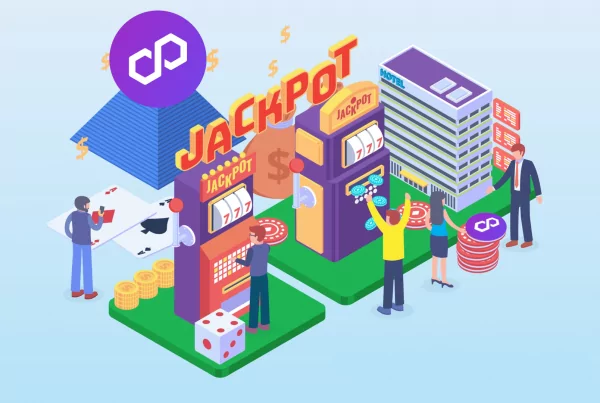
Pi Network is a cryptocurrency project that lets you mine Pi coins using your mobile phone. Launched in March 2019 by Stanford graduates Nicolas Kokkalis and Chengdiao Fan, Pi Network aims to democratize cryptocurrency mining with minimal energy consumption.
The ecosystem has grown to over 60 million users, largely due to its unique mobile mining mechanism, and the community-driven initiatives that keep users engaged. But what about its mainnet launch and its potential implications for the Pi coin price?
Key Takeaways
- Pi Network is a blockchain network that allows cryptocurrency mining on mobile devices, launched on March 14, 2019, by Stanford graduates.
- Pi Network focuses on enhancing cryptocurrency accessibility with low energy consumption using the Stellar Consensus Protocol.
- The network aims to transition to Mainnet in 2024, enabling PI coin conversion into real-world assets, amid ongoing delays and user verification efforts.
- Over 12 million users have completed the KYC process so far, with a target of 15 million by launch. Additional users have until December 30, 2024, to complete verification.
- Pi Network has a growing community and active development, but there are concerns over future value, volatility of PI coins post-launch and delays in the project’s roadmap.
What is Pi Network?

Pi Network is a cryptocurrency project launched in March 2019 by Stanford graduates. It focuses on mobile mining to make crypto more accessible.
The network uses the Stellar Consensus Protocol for secure and energy-efficient mining, which allows users to “mine” Pi coins via a mobile crypto mining app.
To guarantee readiness for the mainnet launch, users must complete a KYC process, a requirement that some privacy conscious users won’t like but that says something about the network’s commitment to regulatory compliance and security.
Pi Network roles
Engaging with the Pi Network ecosystem means you’re part of a diverse group of users who contribute in various ways, depending on your role within the network.
- As a Pioneer, you’re an entry-level user who mines PI coins by regularly engaging with the mobile app. This role incorporates over 60 million engaged global users who contribute to the ecosystem’s growth and stability.
- Contributors earn better mining rates by expanding their security circles and helping to secure the network. By maintaining a reliable and stable security circle, Contributors play a crucial role in the network’s overall security and integrity.
- Ambassadors grow the network by inviting new members to join and earn rewards for their efforts.
- Nodes are users who operate a decentralized network by running Pi Node software, contributing to the network’s infrastructure. Node Ambassadors recruit developers to build decentralized applications (dApps) on the Pi Network.
These roles, supported by the Pi Core Team and driven by the community, promote the continuous development and security of the Pi Network.
Pi Network roadmap
The Pi Network has laid out an ambitious roadmap. It aims to democratize cryptocurrency mining by allowing users to mine PI coins directly on a crypto mining app without high energy requirements.
Launched in March 2019, the project has been developed in phases. The Pi network roadmap outlines a change through App launch (2018), Testnet launch (2020), and the anticipated Mainnet launch, initially aimed for 2023 but now targeting 2024.
The Mainnet launch date has been delayed several times due to regulatory compliance and user dissatisfaction issues. As of March 2024, Pi Network has over 12 million KYC-verified users, progressing towards a target of 15 million KYC completions for the Mainnet launch.
The shift to the Mainnet will allow users to convert Pi coins into other assets. This means that it will finally be possible to cash out for users who are looking for a chance to sell their mined Pi coins.
The Pi network roadmap also emphasizes the need for ecosystem building, with a goal of integrating at least 100 applications into the network by the launch of the Mainnet.
Initiatives like the Pi2Day Challenge help foster participation and readiness for the mainnet change, despite community frustrations from repeated postponements.
Pros and cons of Pi Network
Pi Network stands out by letting users mine cryptocurrency on their smartphones, a feature that doesn’t burn through battery or data. This accessibility is a major advantage, as it makes it possible for anyone to participate in cryptocurrency mining without needing specific technical knowledge.
One significant disadvantage is the restricted ways to trade or sell Pi coins and liquidity issues since the shift to the mainnet. Users have expressed disappointment, leading some to explore alternative platforms. There’s also a noticeable lack of games or trading protocols on their app, not to mention that the actual launch is quite late already.
It’s a very real possibility that the Pi Network project will never manage to fulfill all of its promises.
Despite the challenges, Pi Network boasts a large community of over 12 million KYC-verified users. This strong participation is proof of the network’s engagement as it approaches the mainnet launch.
However, uncertainties around the future value of Pi coins and potential price volatility post-launch remain concerns for investors and users alike.
Pros:
- Wide accessibility: Users can mine via smartphones with low battery and data usage.
- Strong community: Over 12 million KYC-verified users participate actively.
- User control: Features like the Lockup mechanism enhance stability and user control.
Cons:
- Limited trading: Restricted token trading and liquidity issues post-shift.
- Uncertain future: Concerns about the potential value and volatility of Pi coins post-launch.
- Repeated delays: Frustration from repeated mainnet launch delays affects user morale.
When is the Pi Network mainnet launch date?
Excitement and anticipation are building as the Pi Network’s mainnet launch date draws near.
Initially planned for late 2023, the mainnet launch is now expected to occur in 2024, following some delays.
The network aims to have 15 million KYC-verified users by the time of the launch, with over 12 million verifications already completed.
A six-month KYC grace period starting July 1, 2024, gives Pioneers extra time to complete their KYC processes.
With continuous development efforts addressing technical challenges and optimizing platform functionality, the mainnet migration has seen a steady increase, with 5.79 million users already shifted from the Testnet.
Despite user frustrations due to repeated delays, the network seems to remain committed to its plan and is urging Pioneers to complete their KYC and migration by December 30, 2024, to retain their Pi coins.
This ongoing process guarantees the network’s integrity and readiness for the open mainnet phase.
Pi coin price potential
Investors are keenly watching the Pi coin price potential, as its value has mostly remained in the range between $30 and $40 for IOUs in 2024. “IOU” stands for “I owe you”.
With the Open Mainnet launch anticipated in the near future, market dynamics suggest a considerable potential for the Pi coin price to rise further.
As the Pi Network evolves into its Open Mainnet, assuming the launch actually does go off and happens as planned, we might see a surge in Pi coin price.
Here are three key points to reflect on regarding the Pi coin price potential:
- Volatility and risk: The speculative nature of trading IOUs in the cryptocurrency market demands cautious investment strategies due to potential volatility and price fluctuations.
- Current trading status: Currently, Pi coins aren’t available for trading, barring a few exceptions (such as Huobi), as they’re awaiting the evolution to an Open Mainnet to facilitate conversion into fiat currencies.
- Future value influence: Market dynamics, including user adoption and demand within the cryptocurrency ecosystem, will considerably influence the future value of Pi coins post-Open Mainnet launch.
Is Pi Network worth it?
Initially expected to launch in late 2023, the mainnet launch date has been postponed due to technical challenges, with the latest target now potentially extending beyond 2024. Users are required to complete Know Your Customer (KYC) processes by December 30, 2024, to retain their Pi coins, which has caused frustration among the community.
The Pi coin’s price is currently in a downtrend (though to be fair, pretty much everything is), but speculators predict potential increases in value post-mainnet launch. Here are three key factors to examine:
- User engagement: Pi Network has maintained strong user engagement through initiatives like the Pi2Day Challenge, which encourages participation and readiness for the mainnet shift.
- Users and KYC: Over 12 million users have completed KYC, with a target of 15 million set for the anticipated Open Mainnet launch.
- Future prospects: Despite delays, the network continues to develop and expand, with new applications, integrations, and strategic partnerships being announced, which could enhance its value and utility in the future.
While the Pi coin isn’t currently tradable, IOUs are traded on platforms like Huobi and Bitmart.
Your investment decision should reflect these factors and the potential future success of Pi Network.
Is Pi Network safe?
Pi Network is generally considered safe, having undergone security reviews with no major vulnerabilities discovered. To guarantee your assets are secure, the KYC process is mandatory. This enhances user verification and security, helping to mitigate potential risks.
Here are some key points to note about the safety of Pi Network:
| Aspect | Safety Measures | Benefits |
| KYC Process | Mandatory for retaining Pi coins | Enhances user verification and security |
| Official App Sources | Minimize risks of fraud and scams | Protects from unofficial apps |
| Ongoing Community Engagement | Transparency to maintain trust and credibility | Keeps users informed and engaged |
| User Information | Be cautious of phishing attempts | Protects personal data |
| Phishing Attempts | Be wary of scam emails or messages | Avoids potential fraud |
Can Pi coin reach $100?
The journey of Pi coin reaching $100 is deeply intertwined with its user adoption and the broader market conditions post the Open Mainnet launch. These are some of the most important factors influencing Pi’s future price:
- User adoption: The potential value of Pi coin heavily depends on how widely it’s adopted by users. If the community remains engaged and supportive, the price could skyrocket.
- Market dynamics: The future price of Pi will be influenced by overall market conditions. A favorable market could see Pi’s value rise markedly.
- Successful KYC process: Completing the KYC process is essential for retaining Pi coins. Successful KYC completion will influence demand and value after the mainnet shift.
Engaging in the Pi2Day Challenge and other community initiatives can foster participation and readiness for the mainnet movement.
It’s clear the project is still doing their best to complete their objectives, and if they succeed, it could potentially see Pi coin reach $100. From the current price, it would roughly be a 3x, and in a full-on crypto bull market, a 3x is conservative. However, the speculative nature of IOUs indicates a high-risk trading environment where prices may see volatile fluctuations post-launch.
Essentially, all of it is contingent on the project’s success (i.e. successful launch), user adoption, and what the broad market does.
The bottom line
Pi Network is a cryptocurrency designed for mobile mining, launched by Stanford graduates in March 2019. It aims to make crypto accessible by allowing users to mine Pi coins with minimal energy consumption. The network boasts over 12 million KYC-verified users and plans for a Mainnet launch in 2024. Community-driven initiatives keep user engagement high despite delays and uncertainties about the coin’s future value.
If you’re also interested in cryptocurrencies other than Pi Network, make sure to take a look at our shortlist of the best crypto to buy now.



